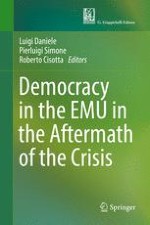2017 | OriginalPaper | Chapter
The Quest for Financial Stability and Democracy in the Banking Union: Promoting Institutional Transformation and Regulatory Evolution Through Unconventional Means
Author : Roberto Cisotta
Published in: Democracy in the EMU in the Aftermath of the Crisis
Publisher: Springer International Publishing
Activate our intelligent search to find suitable subject content or patents.
Select sections of text to find matching patents with Artificial Intelligence. powered by
Select sections of text to find additional relevant content using AI-assisted search. powered by
